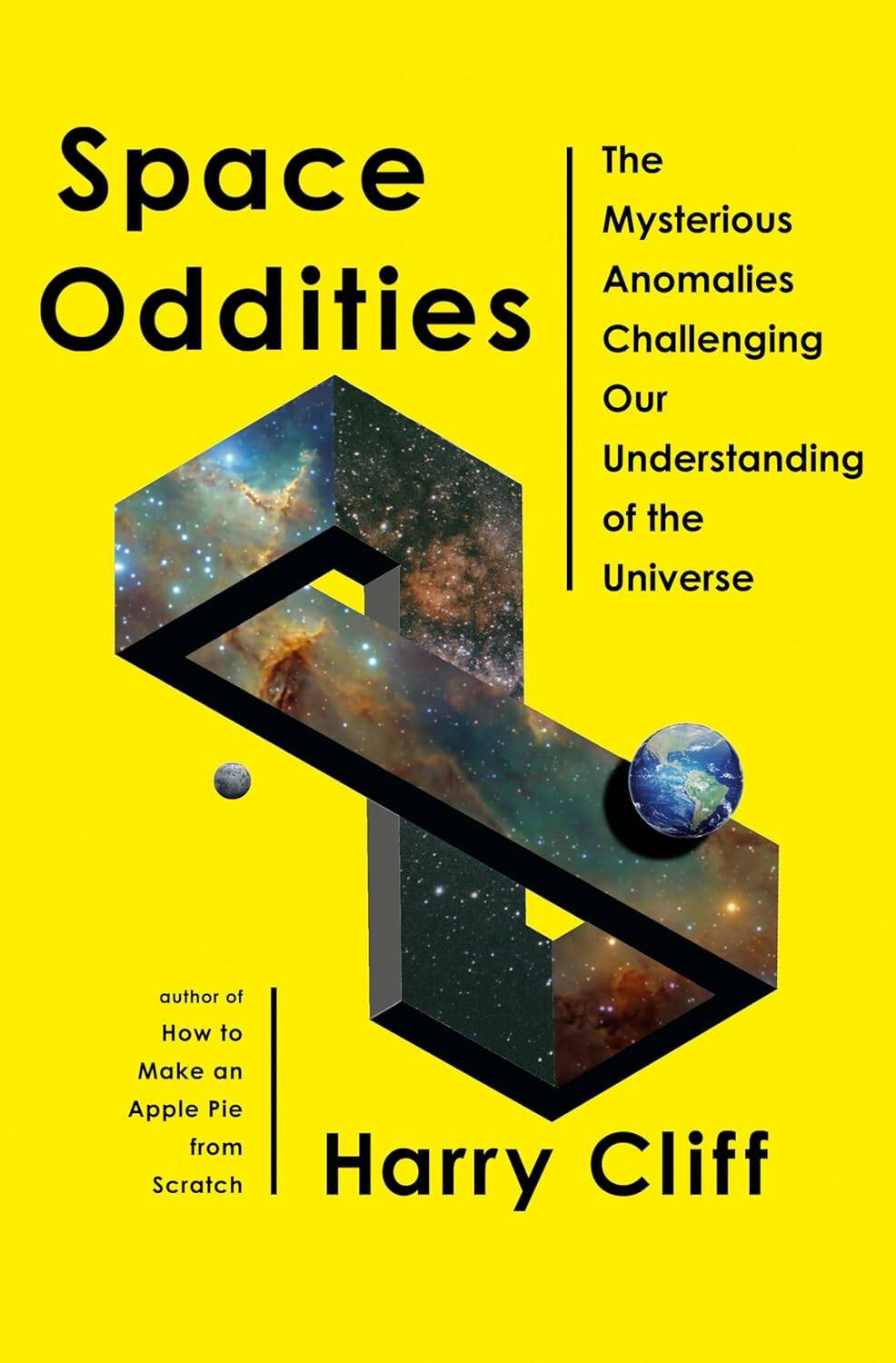The final frontier
Mind-boggling celestial anomalies relayed in engaging, accessible account
Advertisement
Read this article for free:
or
Already have an account? Log in here »
To continue reading, please subscribe:
Monthly Digital Subscription
$1 per week for 24 weeks*
- Enjoy unlimited reading on winnipegfreepress.com
- Read the E-Edition, our digital replica newspaper
- Access News Break, our award-winning app
- Play interactive puzzles
*Billed as $4.00 plus GST every four weeks. After 24 weeks, price increases to the regular rate of $19.00 plus GST every four weeks. Offer available to new and qualified returning subscribers only. Cancel any time.
Monthly Digital Subscription
$4.75/week*
- Enjoy unlimited reading on winnipegfreepress.com
- Read the E-Edition, our digital replica newspaper
- Access News Break, our award-winning app
- Play interactive puzzles
*Billed as $19 plus GST every four weeks. Cancel any time.
To continue reading, please subscribe:
Add Free Press access to your Brandon Sun subscription for only an additional
$1 for the first 4 weeks*
*Your next subscription payment will increase by $1.00 and you will be charged $16.99 plus GST for four weeks. After four weeks, your payment will increase to $23.99 plus GST every four weeks.
Read unlimited articles for free today:
or
Already have an account? Log in here »
Hey there, time traveller!
This article was published 25/05/2024 (508 days ago), so information in it may no longer be current.
In 2013, scientists at a Long Island institute began moving a metal ring that was 50 feet in diameter — a superconducting coil used to study some of the particles that form matter — to a new home 3,200 kilometres away. The spectacle of a huge ring moving along roads at walking speed attracted crowds of onlookers.
What attracted them, however, wasn’t the marvel of human ingenuity the ring represented. Rather, it was a rumour that the ring, wrapped in white plastic, was a UFO, said to have crashed in the area years earlier, evidence of which had been quickly covered up.
“You can’t tell me that’s not a f—-ing spaceship,” one man yelled.
The Associated Press files / University of Utah
Cutline TK…
As amusing as this anecdote surely is, it is also an apt illustration of the vast knowledge gap that exists between the few thousands of theoretical physicists who study the universe and the legions of mere book reviewers who only think of the stars when they want to make wishes.
Bridging that gap is what particle physicist and author Harry Cliff seeks to address in Space Oddities, a marvel of erudition and plain English that is a treat to read and a surprisingly accessible description of the cosmos, what we know of it and how we came to know it.
His method is to describe anomalies — the oddities of the title — in scientific descriptions of the universe and its composition as a means of getting at what they are anomalous of.
So rather than explain what the Standard Model of Particle Physics is, for example, he explains how the presence of particles called neutrinos might undermine the theory. In so doing, the reader comes to understand both the standard and anomaly, not to mention that both exist because hundreds of physicists worked for years and decades to make them comprehensible.
Cliff divides his time between Cambridge and Geneva, where he works on the Large Hadron Collider, the largest scientific machine ever built, a 27-kilometre ring in which subatomic particles are accelerated almost to the speed of light. The ring, by the way, is cooled to -271 C.
It’s that kind of detail that makes Space Oddities memorable. So rather than try to retell what Cliff takes a surprisingly short book to explain, here are a few more of his mind-bogglers:
● The universe as we know it came into existence in a “big bang” that lasted less than a second 13.8 billion years ago. About nine billion years later, “in an outer arm of one of hundreds of billions of galaxies, a new star flickered to life. About it circled a fleet of worlds, and on one rocky sphere inert matter somehow came to life.”
● About 400,000 years after the big bang, Cliff explains that “in an extremely short time — around ten billionths of a trillionth of a trillionth of a second — the universe exploded in size by a factor of ten trillion trillion.”

Space Oddities
● The observable universe is more than 90 billion light years across.
● Humans have travelled 400,171 kilometres into space. During 46 years of flight, the space probe Voyager 1 travelled 23.8 billion kilometres, or 0.000000000001 per cent of the distance to the edge of the observable universe.
● Everything in the observable universe is made up of combinations of 17 basic particles. Some — called neutrinos — are unique in that they have no electrical charge, which allows them to fly through solid objects. “They are created in such vast quantities by the nuclear reactions that power the Sun that in the time it takes you to read this sentence, ten trillion will have passed straight through you,” Cliff writes.
● In 2022, the first image produced by the James Webb Space Telescope “revealed a universe teeming with thousands of galaxies squeezed into a tiny patch of sky about the size of a grain of sand held at arm’s length,” Cliff says.
Gerald Flood is a past Free Press comment editor.


